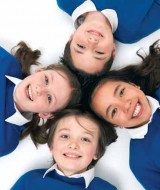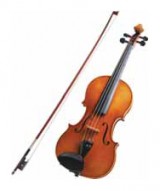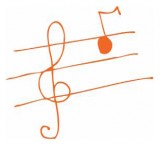Sue Cowley shares four ways to put pupils in a positive frame of mind for learning...
 1. Musical worlds
1. Musical worlds
I have a vivid memory of doing this activity as a young child, and suddenly realising that listening to music allowed me to create wonderful images in my head.
• Choose a music track that gives a strong sense of place or atmosphere, for instance Grieg’s In the Hall of the Mountain King.
• Ask the children to close their eyes and, while you play the music, to conjure up a mental picture of a particular place or setting.
• When the music finishes, talk as a class about the different kinds of places that they visualised.
• If you’d like to extend this activity, you could get the children to create visual representations of what they saw, for instance using paints, clay or collage.
 2. We are family
2. We are family
This starter could precede or follow some work on different families of instruments. You’ll need an open space in which to do the activity. You’ll also need to prepare a set of cards, each one with a picture of a different instrument on it (violin, flute, piano, guitar, and so on).
• Explain to the children that you are going to be thinking about instrument families – do they know what these are (strings, percussion, brass, woodwind)? Can the pupils give some examples of a percussion instrument?
• Hand one instrument card to each child, or ask the children to work in pairs with one card between two.
• Explain that, when you say ‘go’, the children are going to find the other members of their instrument ‘family’ and stand in a group together.
• Get the class to stand up and say ‘go’. When everyone has found their ‘family’ each group should hold up their cards and read out their instruments in turn. Did everyone find the right ‘family’?
 3. I’ve got rhythm
3. I’ve got rhythm
This activity is really useful for getting the children to start thinking about how music can be written down.
• Host a class discussion: what is a rhythm? Get the children making different kinds of rhythms using parts of their bodies – clapping, clicking, tapping, and so on.
• Now talk about how we might ‘write down’ rhythms. Encourage the children to think about the kind of marks they could use, for instance to show different types and lengths of sounds, and gaps between sounds.
• Give each child, or pair of children, a whiteboard and a whiteboard marker. Alternatively, use some paper on a clipboard, or an exercise book and pen.
• Tap out some rhythms on a drum or using some wooden blocks. As you tap, the children should write down what they hear.
• Ask for volunteers to show their annotations to the class. Can we tap out the same rhythm, following the marks they have made?
 4. Human soundtracks
4. Human soundtracks
This is a fantastic way to show your class how sound effects and vocal noises can be put together to create atmosphere. You will need an open space to do it.
• Get your children to lie down on their backs in a circle, heads in the centre and feet facing outwards. Their ears need to be close together for this to work. With a large class, you might want to split the group into two.
• Explain to the class that they are going to create a ‘soundtrack’, using only their voices and bodies. You will give them a setting, and they will then work together to create a piece of ‘music’, using vocal sounds and noises as appropriate.
• The idea is that the class starts their ‘soundtrack’ quietly, builds to a crescendo, and then either goes quiet gradually, or everyone stops simultaneously. After a few test runs, you’ll find that your pupils quickly get the idea.
• Some suitable settings might include: a rainforest during a storm, a beach, a fairground, and so on.
• As your children get more proficient at doing this, you might like to record some of the soundtracks and play them back to the class.
Teaching Mandarin via video conference
Languages
Should you let educational researchers into your classroom?
Ace-Classroom-Support
